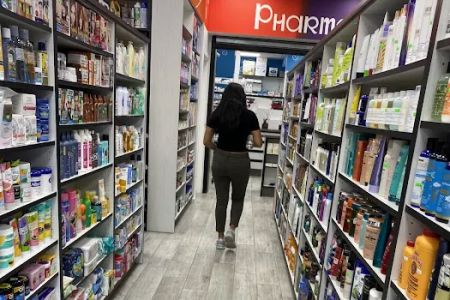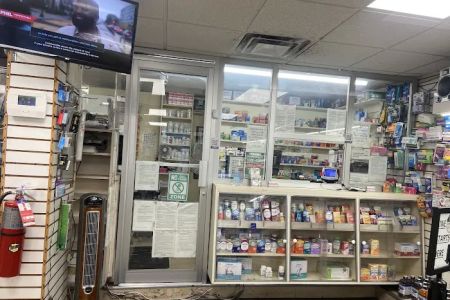How to Conduct Patient Satisfaction Surveys in Pharmacies
As a pharmacist, understanding the needs and preferences of your patients is crucial for providing excellent service. One of the best ways to gather insights is by conducting patient satisfaction surveys. Over time, I’ve learned that these surveys not only provide valuable feedback but also help build stronger relationships with patients. Let me walk you through how to conduct effective patient satisfaction surveys in pharmacies, and how to use this feedback to improve your service.
1. Why Patient Satisfaction Surveys Matter in Pharmacies
Before diving into the details of conducting surveys, it's important to understand why patient satisfaction surveys are so essential. In my experience, surveys are a powerful tool for understanding patient needs, identifying potential problems, and improving overall pharmacy performance. Patients who feel heard are more likely to return, recommend your pharmacy to others, and follow their treatment regimens. Ultimately, patient satisfaction directly correlates with better outcomes, higher retention rates, and a better reputation for your pharmacy.
1.1 The Benefits of Survey Data
When I first started using patient satisfaction surveys, I was surprised at the wealth of information I received. These surveys provide direct feedback about areas where patients are happy, and more importantly, where they believe improvements are necessary. By regularly collecting this data, I’ve been able to identify trends, address complaints before they escalate, and fine-tune our services to better meet patient needs. Surveys allow us to make informed decisions rather than relying on assumptions or isolated complaints.
2. Designing an Effective Patient Satisfaction Survey
Once you’ve decided to implement a survey, the next step is designing one that will provide useful insights. From my experience, the most effective surveys are clear, concise, and focused on gathering actionable data. The goal is to ask the right questions that will allow you to understand the patient experience without overwhelming them with too many questions. A good survey should ideally take no more than 5-10 minutes to complete.
2.1 Key Survey Questions to Include
Based on my own experience, here are some key questions I’ve found helpful to include in a pharmacy patient satisfaction survey:
- How satisfied are you with the speed of service at our pharmacy? - This helps measure wait times and the efficiency of your pharmacy.
- Did you find the pharmacist or staff member knowledgeable and helpful? - This measures staff professionalism and expertise.
- How satisfied are you with the availability of medications you need? - This assesses inventory management and product availability.
- Was your prescription filled correctly? - This is a critical question to ensure accuracy in dispensing medications.
- How would you rate the overall cleanliness and comfort of our pharmacy? - This helps evaluate the physical environment of the pharmacy.
2.2 The Importance of Open-Ended Questions
While it’s important to ask specific questions with clear rating scales (like 1-5 or 1-10), I’ve also found that including open-ended questions yields valuable, qualitative feedback. For example, asking “What can we do to improve our services?” can uncover hidden problems that you might not have considered. Patient comments can also give you a better understanding of what makes your pharmacy stand out or areas where you can offer a more personalized experience.
3. How to Distribute Your Surveys
Once your survey is ready, the next step is getting it into the hands of your patients. I found that offering multiple ways to complete the survey increases response rates. Some patients prefer online surveys, while others may appreciate a paper version they can fill out during their visit. There are several ways to distribute surveys, and choosing the right method depends on your patient demographic and pharmacy environment.
3.1 Online Surveys
For tech-savvy patients, an online survey is an easy and efficient way to collect feedback. There are several online platforms like SurveyMonkey, Google Forms, or Typeform that allow you to create professional-looking surveys and share them via email or text message. These platforms automatically compile responses, making it easier for you to analyze the data. Offering an online survey link on your pharmacy’s website or through a social media page can also help increase accessibility.
3.2 In-Store Paper Surveys
Some patients may not be as comfortable with technology or may prefer filling out a paper survey on the spot. I’ve found that providing a simple survey at the counter or in a waiting area is an effective option. Offer a small incentive, such as a discount on their next purchase, to encourage participation. Having a designated box or drop-off location ensures that the surveys are easy to return.
4. Analyzing Survey Results
After you’ve collected enough responses, it’s time to analyze the data. This is the stage where you get to see how your pharmacy is performing and where there are areas for improvement. I recommend reviewing both the quantitative data (like ratings on specific questions) and the qualitative feedback (open-ended responses). You can look for patterns or recurring themes to identify what’s working well and what needs attention.
4.1 Categorizing Feedback
One technique I use to analyze open-ended feedback is categorizing comments into themes or areas. For example, if multiple patients comment on the long wait times, you know that addressing staffing or improving workflow is a priority. On the other hand, if patients frequently mention how friendly the staff is, that’s a positive that you can continue to highlight in your training and marketing materials.
4.2 Addressing Negative Feedback
While positive feedback is rewarding, addressing negative feedback is essential for growth. If a patient mentions a problem, such as an incorrect prescription or poor customer service, it’s important to take action. I’ve found that following up with the patient directly—when appropriate—can show that you value their input and are working to make improvements.
5. Using the Results to Improve Your Pharmacy
The most important step after analyzing survey results is using the data to make improvements. If the survey results reveal that patients are dissatisfied with wait times, consider evaluating your staffing levels or streamlining your prescription filling process. If multiple patients comment on the cleanliness of the pharmacy, you may want to review your cleaning procedures. It’s essential to act on the feedback you receive to create a better experience for future patients.
5.1 Sharing Results with Your Team
Involving your pharmacy team in the process is key to making meaningful changes. I always share survey results with my team and discuss how we can work together to implement improvements. This keeps everyone engaged and motivated to enhance the patient experience.














